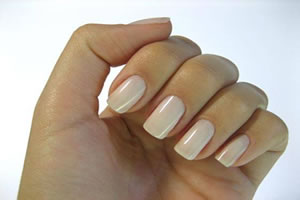Annelids are invertebrate animals with a soft, elongated, cylindrical and ring-divided body, showing a clear segmentation.
the phylum Annelid presents 15 thousand species, found in fresh or salt water and in moist soil.
The main representatives of annelids are earthworms and leeches.
General features
The annelids are triblastic animals, coelomated and with bilateral symmetry.
body structure
The body of annelides is composed of rings (metamers) and coated with coelom.
Celoma is a body cavity that is located inside the mesoderm. It is filled with a liquid called coelomic fluid, where the animal's viscera are lodged.
In the absence of a skeleton, coelom provides support for the body and aids in locomotion.
Digestive system
The annelids present complete digestive system. The digestive organs in sequence are: the mouth, the crop, the gizzard, the intestine and the anus.
The food is stored in the crop, goes to the gizzard where it is crushed and nutrients are absorbed in the intestine.
The way of feeding varies according to the species, but they can be herbivores, carnivores and hematophagous.
Circulatory and Excretory System
The annelids have closed circulatory system. This means that blood flows inside vessels. The hemoglobin protein is found in the blood, but without erythrocytes.
The circulatory system is composed of two vessels, one dorsal and one ventral, in addition to a set of contractile vessels, which can be compared to hearts.
These animals have a pair of nephrids per segment, which are responsible for removing excreta from the blood and coelom.
Breathing
The thin, moist skin of the annelids allows gas exchange with the environment, which characterizes the skin breathing.
Aquatic annelids perform the gill breathing.
Nervous system
The nervous system is of the ganglionic type. It is made up of a pair of brain ganglia, from which two ventral nerve cords depart.
Along the strands, there are a pair of ganglia in each ring.
reproduction
The reproduction of annelids can be of form asexual or sexual.
With the exception of the polychaetes which are dioic, the other annelids are monoecious (hermaphrodites).
In the case of monoecious, like the earthworm, there is a portion of the body that helps in reproduction, the clitele.
The clitoris is a lighter ring that releases mucus that helps to fix two earthworms at the time of fertilization.
Find out how reproduction occurs:
- The worms are placed side by side and unite, with opposite ends, that is, male genital orifice with seminal receptacles of each;
- In this position, sperm are released directly into the seminal receptacle;
- The worms separate, each carrying the other's sperm;
- Meanwhile, the eggs mature and are shed in the cocoon, formed by the mucus secreted by the clitoris;
- The cocoon covers the clitoris region and as the animal moves, it starts to move towards the anterior extremity;
- When passing through the seminal receptacle, the sperm that were stored are eliminated on the eggs, resulting in fertilization;
- After that, the cocoon finishes moving and detaches itself from the worm's body and closes;
- In the cocoon that was released, the eggs develop, giving rise to new worms.
Classification
Annelids are classified into three groups, according to the presence and absence of bristles.
- oligochaetes: They have short bristles and little quantity. They are hermaphrodites, found in wet or aquatic terrestrial environments. Examples: earthworms, tubifex and earthworms.
- Hirudine or Achaetes: No bristles. They live in an aquatic or wet terrestrial environment. They are hermaphrodites. Example: leech.
- Polychaetes: Presents evident bristles. They live in an aquatic environment. Examples: nereis and tubícolas.
Learn more about Animal Kingdom.
Representatives
Meet the main representatives of annelids:
worm
Earthworms have thin, moist skin. Some rings closer to the mouth are lighter in color and constitute the clitoris, used in reproduction.
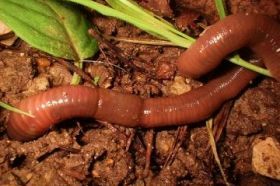 Earthworms live in moist soil
Earthworms live in moist soil
The breathing of earthworms is cutaneous. In the ventral part, a certain roughness can be seen due to the presence of tiny bristles, which serve as a support point when the animal moves on the ground.
Earthworms are hermaphrodites and cross-fertilize. At the time of reproduction, they leave the earth at night and, pairing their bodies in the opposite direction, they attach themselves with the help of bristles and the clitoris, carrying out the simultaneous exchange of sperm.
Earthworm's ecological importance
Earthworms live in the soil, especially in areas with vegetation cover, abundant organic matter and lots of moisture.
They are recognized for their importance in the soil, as they dig tunnels and galleries that allow air and water to penetrate the land. This facilitates the development of plant roots.
In addition to ingesting organic material from the soil, they also eliminate faeces, contributing to fertility with the production of humus.
Also know the Aquatic Invertebrates and Terrestrial Invertebrates.
Minhocuçu
The earthworm is a kind of earthworm that can reach up to two meters in length. You could say it's a giant earthworm.
 Minhocuçu known as giant earthworm
Minhocuçu known as giant earthworm
Its color varies from black to red. In reproduction, each egg can generate from two to three chicks.
Tubifex
Tubifex is a genus of freshwater annelids, also found in polluted and poorly oxygenated waters. They measure around 1 cm and can form colonies.
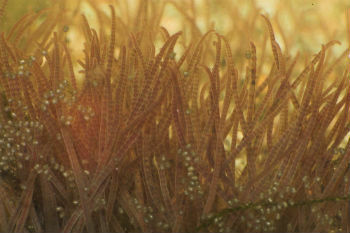 Tubifex living in colonies
Tubifex living in colonies
They feed on debris that settle at the bottom of these waters. They are used as food for ornamental fish.
Leech
The leech lives in the aquatic environment and feeds on the blood of other animals. It can feed for a long time without being noticed, as it produces a substance with anesthetic action.
It has two suction cups, one in the mouth and the other in the anal region, which ensure fixation while feeding.
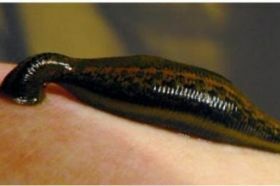 The leech can be used in medical treatments
The leech can be used in medical treatments
Medical importance of the leech
The leeches were once used to perform bloodletting. They used to be applied for a while on the patients' skin so that they sucked in a sufficient amount of blood and then removed. It was used to treat arterial hypertension and pulmonary emphysema.
Nereis
The nereis is a predator that moves on the seabed, by lateral movements, looking for small animals.
They have several sensory structures on their heads and a pair of jaws, located close to the pharynx.
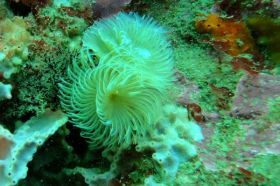
Also know about the molluscs, another group of invertebrate animals and with a soft body.

